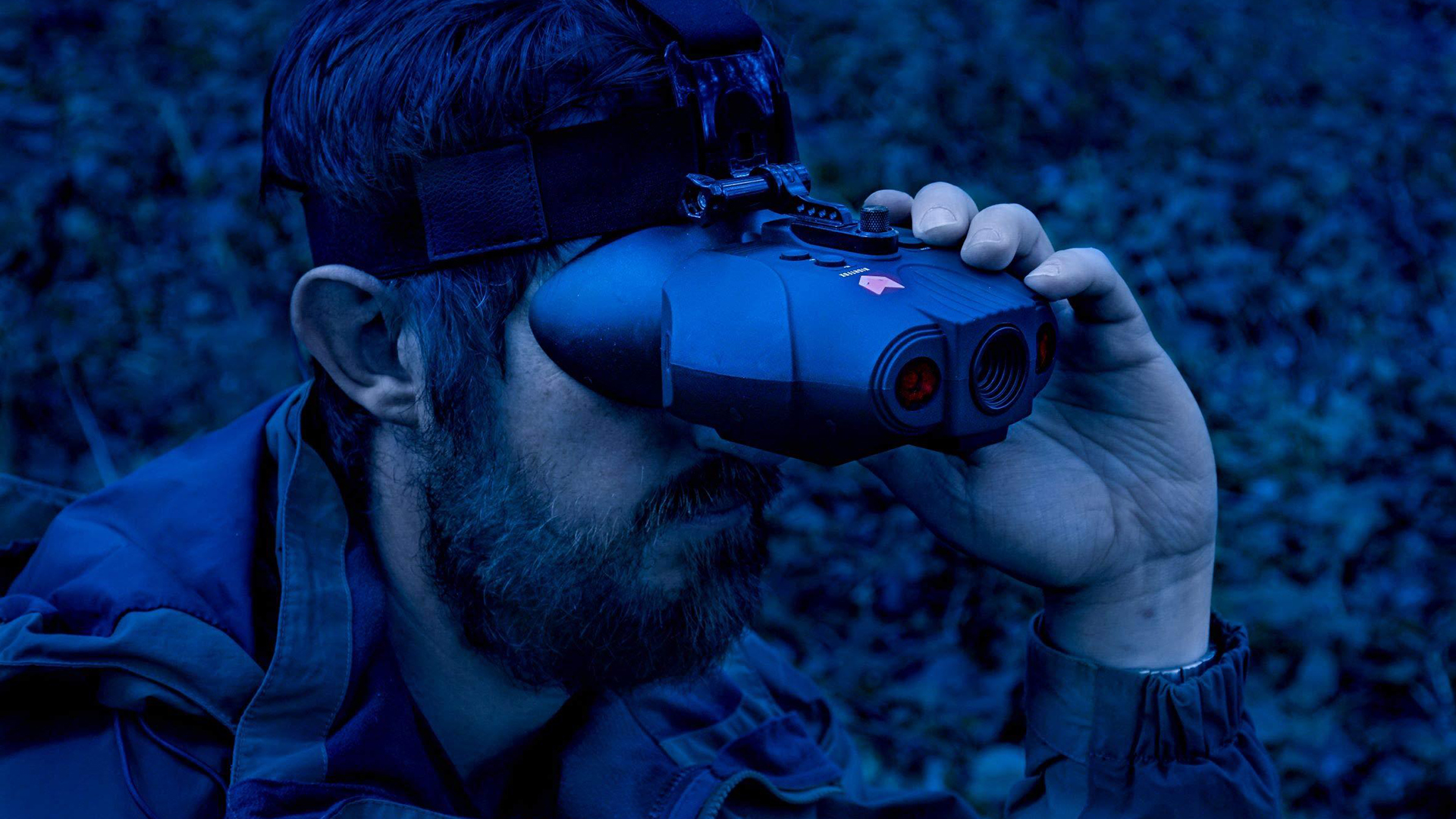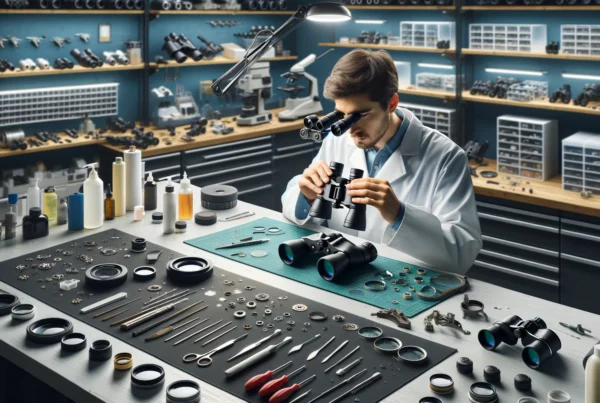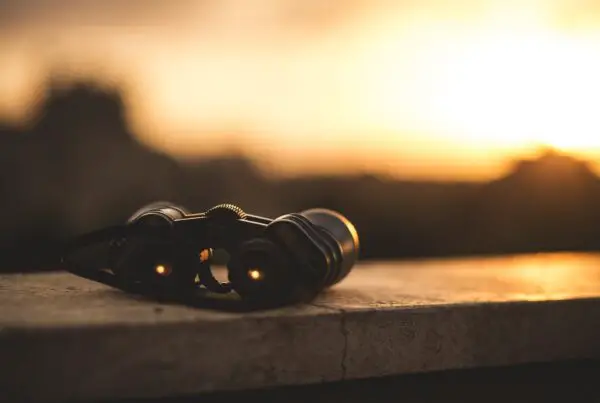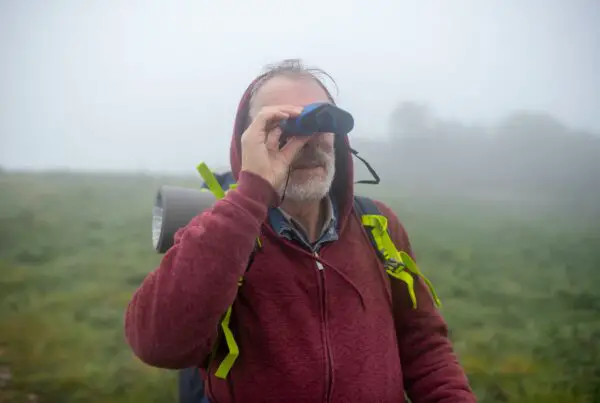Contents
The enchanting beauty of the night sky beckons, but navigating its celestial wonders in low light conditions can be a challenge. Fear not, for with the right tips and techniques, you can unlock the mysteries that lie beyond the veil of darkness.
To optimize binocular use in low light conditions, opt for larger objective lens diameters, lower magnification, and high light transmission coatings. Stabilize your hands or use a tripod, avoid bright light sources, and allow your eyes to adjust to the darkness. Consider binoculars with image stabilization for enhanced viewing.
Grab your binoculars and embark on a journey of discovery as we reveal the secrets to making the most out of your stargazing and wildlife observations in low light conditions.
#1: Selecting the Right Binoculars
Selecting the right binoculars is crucial for optimal performance in low light conditions. Here are key considerations:
Objective Lens Diameter:
Larger objective lens diameters allow more light to enter the binoculars, resulting in brighter images. Opt for binoculars with 42mm or 50mm objective lenses to maximize light gathering capability.
Magnification:
Higher magnification reduces the amount of light reaching your eyes and can result in a dimmer image. Choose lower magnification binoculars (7x or 8x) for a wider field of view and brighter images in low light conditions.
Coatings and Light Transmission:
Lens coatings play a vital role in enhancing light transmission and reducing glare. Look for binoculars with fully multi-coated or phase-corrected coatings, as they significantly improve brightness, clarity, and overall image quality.
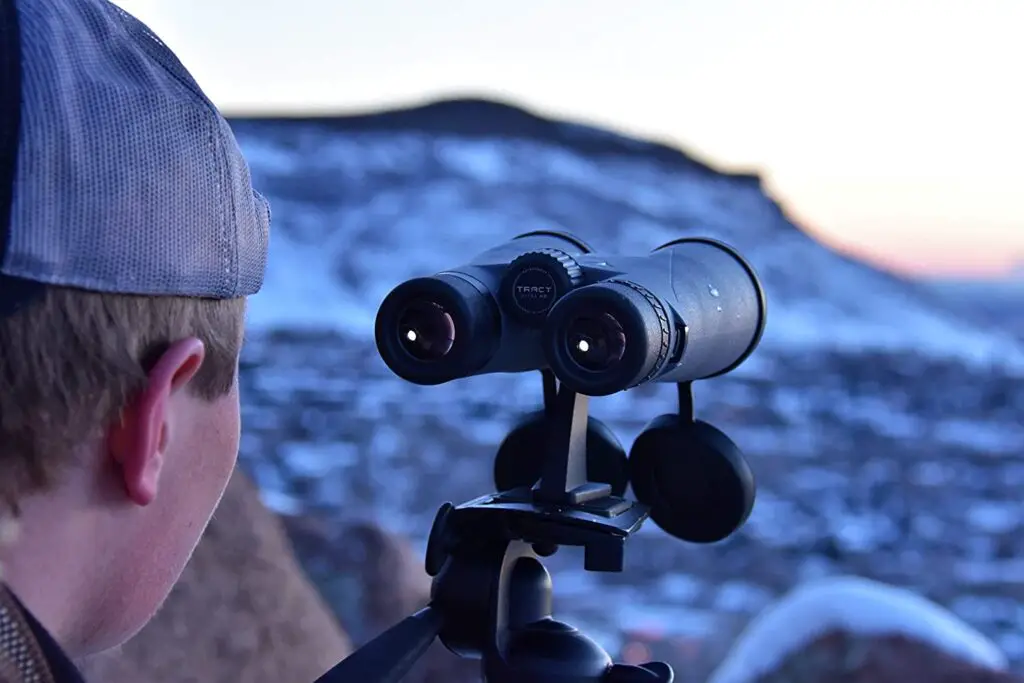
#2: Techniques for Optimal Viewing
To optimize your viewing experience in low light conditions, follow these techniques:
Interpupillary Distance Adjustment:
Adjust the binoculars to match your interpupillary distance, ensuring a single, merged image. This provides comfortable and immersive viewing.
Stability Measures:
Minimize image shake by using a tripod or stabilizing your hands. Resting your elbows on solid surfaces helps maintain a steady view and enhances image clarity.
Minimizing Light Disturbances:
Avoid looking directly at bright light sources, as they can cause temporary blindness and hinder your night vision. Preserve your ability to see in the dark by minimizing exposure to bright lights and screens.
#3: Patience and Observation Techniques
In low light conditions, patience and slow scanning are key to effectively observe your surroundings. Here’s why:
Limited Visibility:
Low light conditions make it more challenging to see details and objects clearly. Taking your time and being patient allows your eyes to adjust and gradually pick up on subtle visual cues.
Enhanced Perception:
Slow scanning enables your eyes to detect movement and contrasting shapes against the background. By carefully observing these visual cues, you can spot wildlife, distinguish objects, or identify points of interest that might otherwise go unnoticed.
Avoiding Missed Opportunities:
Rushing through observations in low light can cause you to overlook fascinating details or wildlife that may be present. By exercising patience and carefully scanning the environment, you increase the likelihood of discovering hidden gems and enjoying a richer experience.
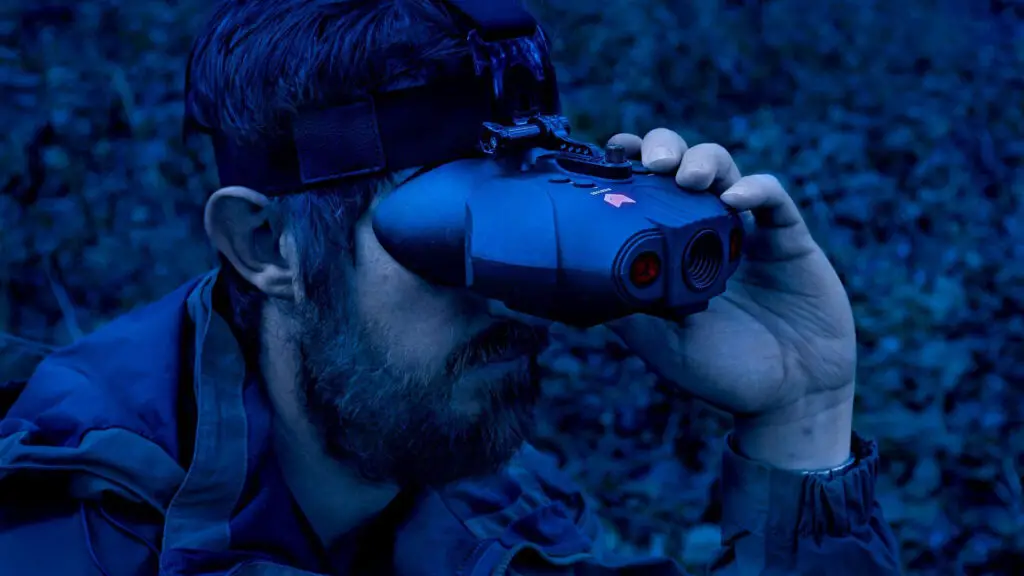
#4: Optional Features for Enhanced Viewing
Binoculars with image stabilization technology offer significant benefits for enhanced viewing in various conditions. Here’s why they are advantageous:
Reduced Image Shake:
Image stabilization compensates for hand movements and vibrations, resulting in a steadier view. This is particularly useful in low light conditions where even slight hand tremors can be magnified, leading to a shaky image. With reduced shake, you can observe details with greater clarity and enjoy a more comfortable viewing experience.
Extended Observation Periods:
By minimizing image shake, image stabilization allows for prolonged observation periods without experiencing eye strain or fatigue. This is especially beneficial when observing distant objects or engaging in extended sessions, such as stargazing or wildlife observation.
Enhanced Image Clarity:
Image stabilization technology helps to produce sharper and clearer images by minimizing the blurring caused by hand movements. This is especially advantageous when viewing distant or dimly lit subjects, as it allows you to discern finer details and appreciate the subtleties of the scene.
Versatility:
Image stabilization technology is particularly valuable when using higher magnification binoculars, as higher magnification amplifies hand movements. With image stabilization, you can effectively utilize higher magnification binoculars in low light conditions without compromising image quality.
#5: Scanning with Purpose: Observing in Low Light:
Low light conditions require a deliberate and focused approach to observation. Scan the area slowly and methodically, paying attention to movement and contrasting shapes against the background. Look for the subtle cues that reveal nocturnal creatures or celestial objects. By scanning with purpose, you enhance your chances of uncovering hidden gems in the shadows.
Note: Remember that using binoculars in low light conditions will never be as effective as daytime observations, but these tips can help you maximize your visibility and enjoy your observation experience.
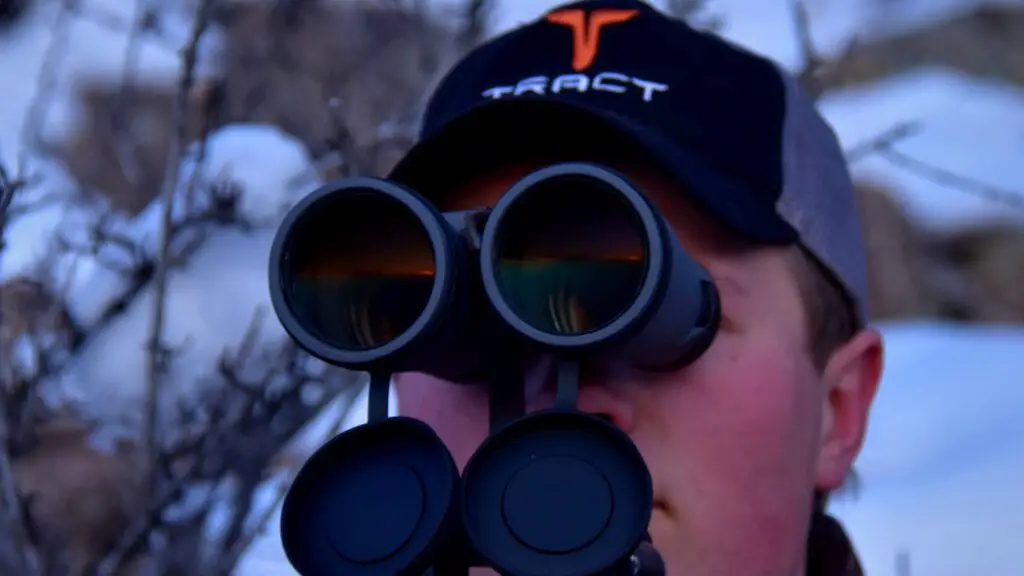
Using These Tips: Summarizing Benefits
Using binoculars in low light conditions can offer several benefits when following the right tips. Here are some key advantages:
- Enhanced Visibility: By implementing the tips for using binoculars in low light conditions, you can significantly improve visibility. Optimal objective lens diameter, lower magnification, and lens coatings designed for low light enhance light transmission, resulting in brighter and clearer images. This allows you to see details and objects that would otherwise be obscured in the darkness.
- Improved Observation Experience: Following the recommended techniques enables a more enjoyable and immersive observation experience in low light conditions. Adjusting the interpupillary distance and using stability measures like tripods or solid surfaces minimize image shake, providing a steadier view. This reduces eye strain and allows for longer, uninterrupted periods of observation, allowing you to fully appreciate the nocturnal world.
- Unveiling Hidden Wonders: Binoculars combined with proper techniques help reveal the hidden wonders of the night. Patience, slow scanning, and observing movement and contrasting shapes against the background allow you to spot celestial objects, wildlife, or other fascinating subjects that thrive in low light conditions. This opens up new realms of exploration and creates unforgettable experiences.
- Preservation of Night Vision: By avoiding bright lights and screens during adaptation periods and minimizing exposure to intense light sources, you can preserve your night vision. This ensures that your eyes remain sensitive to the low light environment, allowing you to observe with greater clarity and appreciate the subtleties of the night sky.
- Versatility and Flexibility: Mastering the use of binoculars in low light conditions expands your flexibility in various activities. Whether you are stargazing, wildlife spotting, or exploring the nocturnal world, the tips provided enable you to adapt to different environments and lighting conditions. This versatility enhances your overall outdoor experiences and broadens your observational horizons.
Frequently Asked Questions (FAQ’s)
Here are some frequently asked questions (FAQs) and answers about using an air fryer for the first time:
Q: What should be the ideal objective lens diameter for binoculars in low light conditions?
A: In low light conditions, larger objective lens diameters are recommended. Binoculars with objective lenses measuring around 42mm or 50mm allow more light to enter, resulting in brighter images and improved visibility.
Q: Does higher magnification help in low light conditions?
A: While higher magnification can provide more detailed views, it reduces the amount of light reaching your eyes, resulting in a dimmer image in low light. It is advisable to opt for lower magnification binoculars, such as 7x or 8x, to maintain a wider field of view and brighter images.
Q: How do lens coatings impact visibility in low light conditions?
A: Lens coatings play a crucial role in enhancing light transmission and reducing glare. Binoculars with fully multi-coated or phase-corrected coatings optimize brightness, clarity, and contrast, enabling improved visibility in low light conditions.
Q: How can I stabilize my binoculars for steady viewing in low light?
A: To minimize image shake, consider using a tripod to provide a stable platform for your binoculars. If a tripod is not available, you can rest your elbows on a solid surface or against your body to reduce hand tremors and enhance image stability.
Q: How long does it take for my eyes to adapt to low light conditions?
A: It typically takes around 20-30 minutes for your eyes to fully adapt to low light conditions. During this time, avoid looking at bright lights or screens, as they can disrupt the adaptation process. Once adapted, you’ll experience improved visibility in the darkness.
Q: What should I look for when observing in low light conditions?
A: When observing in low light, scan the area slowly and deliberately. Look for movement and contrasting shapes against the background, as they can guide you to celestial objects or nocturnal creatures. Patience and keen observation will help you uncover hidden wonders in the shadows.
Bottom Line
Mastering the use of binoculars in low light conditions opens up a world of enchantment and discovery. By selecting the right binoculars, optimizing light transmission, ensuring stability, and observing with patience and purpose, you can unlock the secrets of the night.
Embrace the shadows, allow your eyes to adapt, and immerse yourself in the captivating wonders that thrive in the darkness. With these tips in hand, you’ll embark on a journey of exploration, where the night becomes your canvas and the stars your guide.

A Binoculars enthusiast, who love exploring skies and watching birds. It is my hobby to collect Binoculars of different kinds and try to explore the world through various lenses. This is all I do to explore happiness by magnifying my beautiful world.

